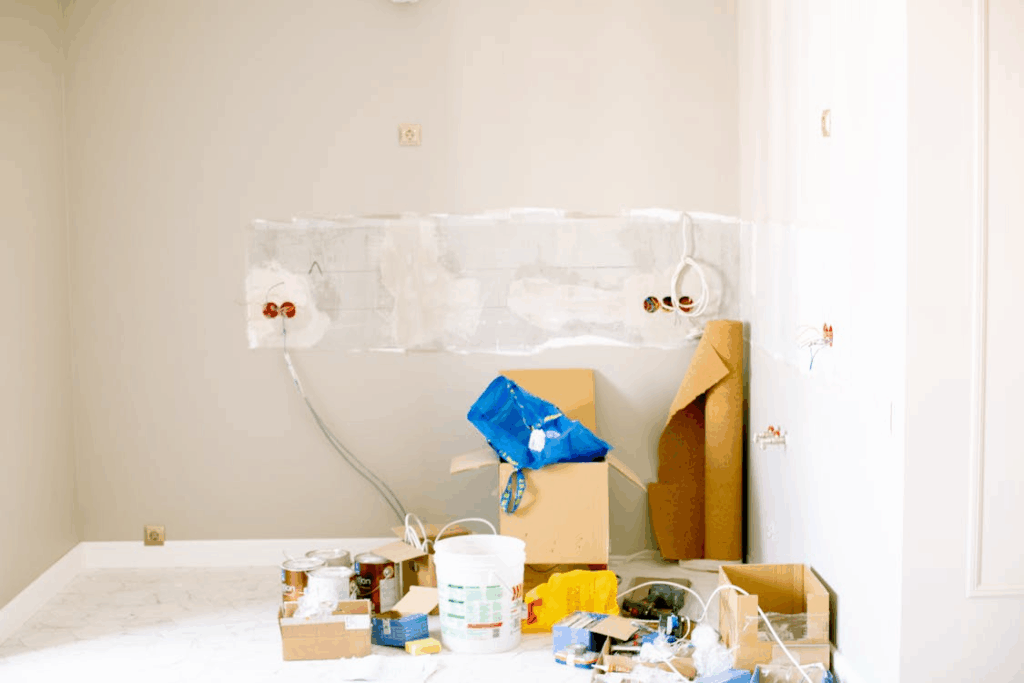Have you ever looked around your Maryland home and wondered which upgrades are actually worth the time, money, and chaos? In a state where historic charm, seasonal weather, and fast-growing property markets collide, deciding where to invest in your home can feel like a balancing act.
Do you modernize the kitchen, replace the drafty windows, or finally get to that tired-looking bathroom? In this blog, we will share the renovation projects that not only improve your space now—but also add lasting value for the years ahead.
Kitchen Renovations That Don’t Just Chase Trends
Kitchens have long been a top priority in home renovations, but not all kitchen projects deliver equal returns. What works best isn’t always the trendiest. Instead of chasing the current color of the year or pouring a fortune into luxury finishes, homeowners who focus on layout, storage, and durable materials tend to see the best long-term payoff.
Buyers and appraisers alike respond to kitchens that make sense—open traffic flow, good lighting, plenty of prep space, and updated appliances. These practical upgrades tend to outlast stylistic fads and support a wide range of future design tweaks. Quartz counters, quality cabinets, and energy-efficient appliances strike that balance between modern and timeless.
It’s also worth remembering that the ROI of a kitchen isn’t always in resale dollars alone.
Upgrades That Make a Home Smarter and More Efficient
Renovating a home today is about more than just beauty. In a time when utility costs are rising, sustainability is trending, and energy codes are tightening, the smartest projects are the ones that improve efficiency and comfort at the same time. Replacing outdated windows, for instance, can dramatically lower energy bills, reduce noise, and improve indoor climate control year-round.
A Bethesda window company that understands both the local housing stock and current performance standards can help homeowners choose upgrades that look good, meet code, and deliver savings. Whether you’re dealing with 1950s ranch-style windows that leak every winter or aging casement glass that rattles with every breeze, modern replacement windows can be custom-fit to the structure without altering the original architecture. More importantly, they immediately make the home more comfortable and future-proofed against energy costs.
Unlike purely cosmetic upgrades, high-efficiency windows improve the resale value and appeal of a property because buyers understand the long-term benefit. New windows are one of the few upgrades that blend form and function in a way that appeals to homeowners and future buyers alike. With the right installation, this kind of project can boost value, reduce costs, and modernize your home’s feel without changing its character.
Bathrooms Built for Daily Use and Aging in Place

Bathroom updates carry weight not just for aesthetics, but for accessibility and longevity. Renovating with ease of use in mind—adding wider entrances, installing curbless showers, upgrading ventilation—makes bathrooms more functional now and more appealing later to a broader range of buyers.
Storage matters here too. Modern homeowners want bathrooms that accommodate real-life items: bulk toiletries, shared counters, and flexible shelving. Lighting also gets high marks, especially layered lighting that supports both task and relaxation.
While a spa-worthy design gets the attention, the best bathroom renovations keep comfort and usability at the center. These are spaces used daily. Every design decision should reduce friction—from temperature control to water pressure to layout. Long-term value comes from thoughtful planning, not expensive tile alone.
Finishing Spaces You Already Own
One of the most strategic renovations you can do is finishing underutilized space. Attics, basements, and garages often go unused or half-used, even though they already fall under your roof. Turning these into livable areas can add square footage without expanding the footprint of the home, which keeps construction costs more contained.
Finished basements that include secondary living rooms, guest suites, or home offices are particularly valuable in today’s flexible-living environment. As remote work has become more common, so has the need for quiet, dedicated work areas. A home that already offers this functionality will outperform one that doesn’t—even if it has the same square footage.
The same goes for lofts or attic spaces that can be converted into playrooms, bedrooms, or studio nooks. When done right—with appropriate insulation, ventilation, and access—these spaces become standout features that add long-term usability and resale value.
Curb Appeal That Signals Longevity, Not Just Looks
First impressions count, and buyers will often judge a home within seconds of seeing it. That doesn’t mean your front yard needs to look like a magazine cover, but it should reflect care, structure, and maintenance. Simple landscaping updates—clean edges, mulched beds, well-trimmed shrubs—signal that the home is tended to.
Beyond plantings, think about walkways, lighting, and entry points. A well-lit path, clean house numbers, and a solid front door aren’t just aesthetic. They improve safety, welcome guests, and signal that the home has been thoughtfully maintained.
Exterior paint, siding repairs, and clean gutters also rank high in buyer psychology. No one wants to inherit a list of chores. A home that looks finished from the outside tells the story that the inside likely follows suit. And in a competitive market, that perception makes a difference.
Flooring That Ages Well and Wears Even Better
Flooring affects every room and every day. Yet many homeowners rush this decision based on look alone. The best long-term flooring choices are the ones that combine durability with comfort and adaptability.
Hardwood remains a solid investment—not only for its lifespan, but for its ability to be refinished. Engineered hardwood and high-end vinyl planks are rising in popularity for their resilience and moisture resistance. These options hold up in high-traffic areas, resist scratches, and stay looking fresh with minimal upkeep.
Carpet still has its place, especially in bedrooms, but investing in higher-end materials and low-pile varieties helps avoid the worn-in, outdated feel that cheaper carpet develops after just a few years. When selecting flooring, think about pets, foot traffic, and long-term cleaning—not just color or cost.
Building Value Isn’t Always Measured in Price
Not every renovation will skyrocket your home’s value on a spreadsheet, and that’s fine. The most valuable improvements are the ones that enhance how the space supports your life. Efficiency, comfort, usability—these elements create emotional and functional value that resonates with both current homeowners and future buyers.
In the post-pandemic world, people see their homes differently. They’re not just looking for pretty spaces. They’re looking for homes that adapt to their lives, reduce stress, and make daily routines smoother. Renovations that serve those goals—regardless of size—stand the test of time.
Long-term value comes from projects that feel as good in ten years as they do today. Not because the finishes stayed trendy, but because the improvements were rooted in how people live, work, and recharge inside their homes. If your renovations support that rhythm, they’ve already done their job.

